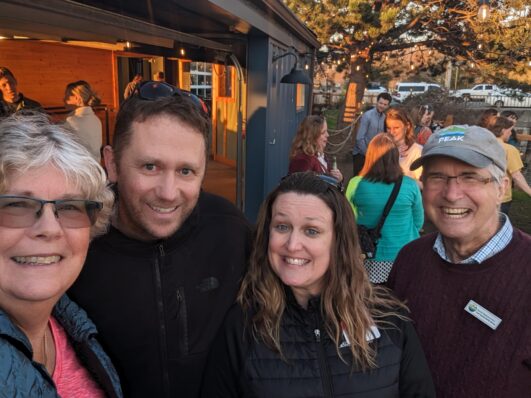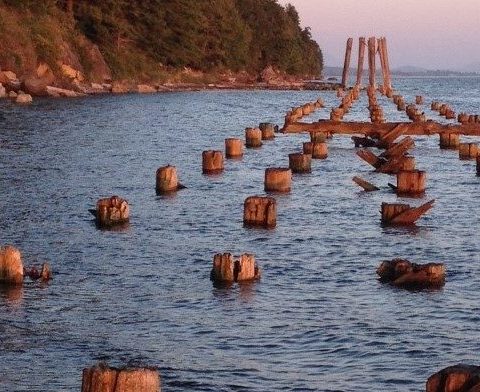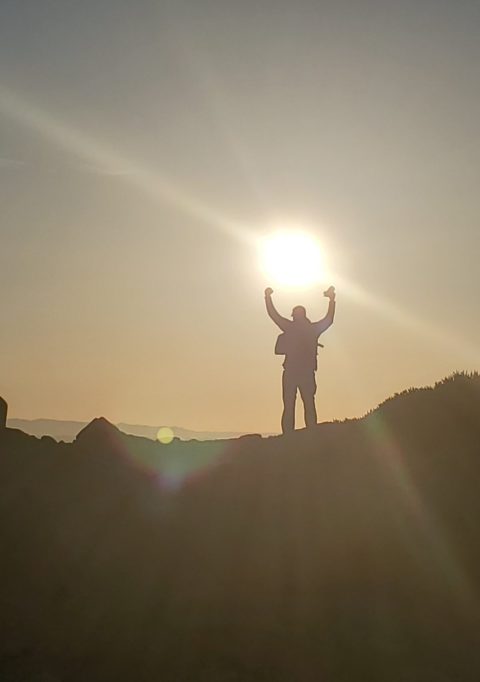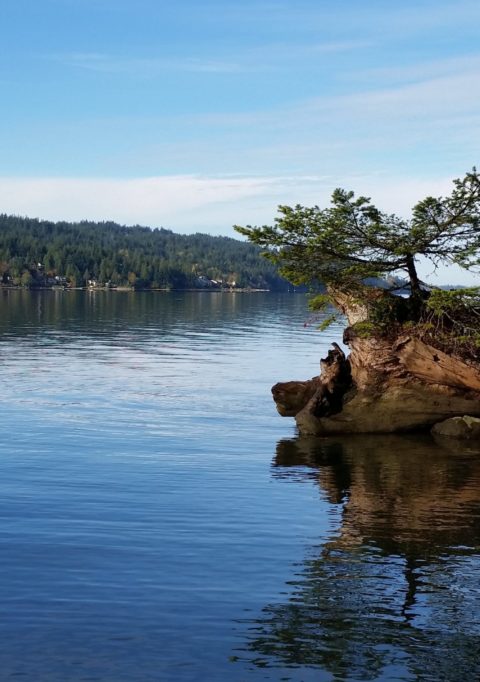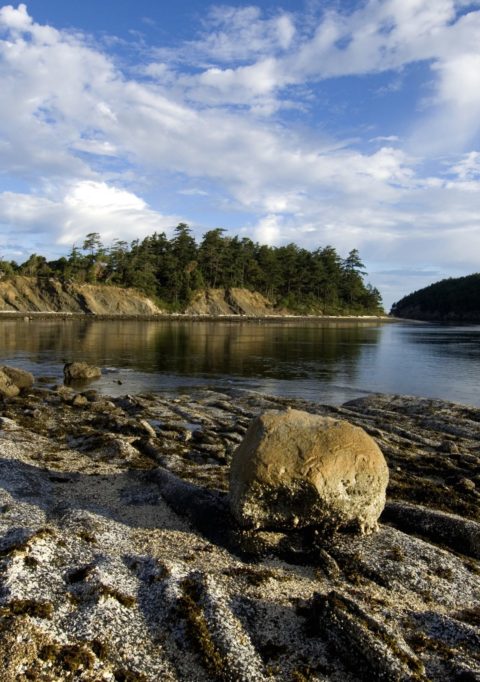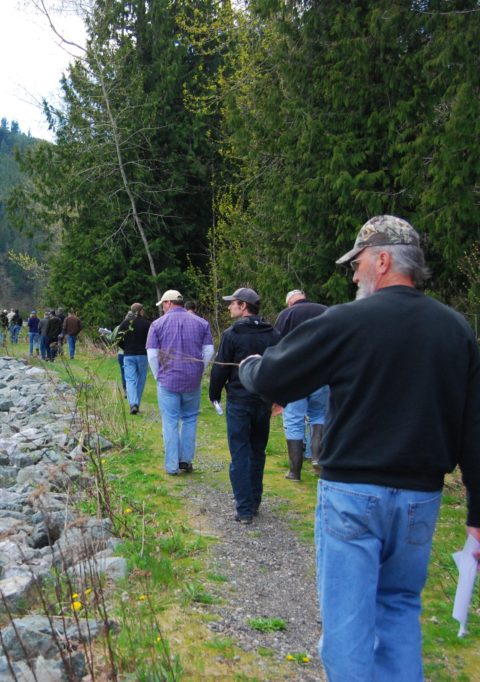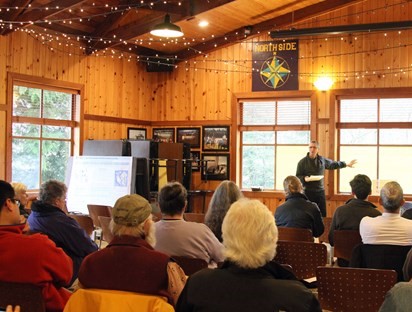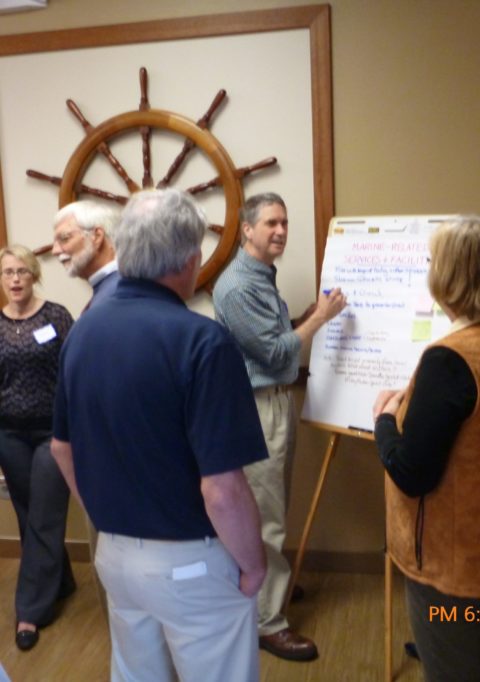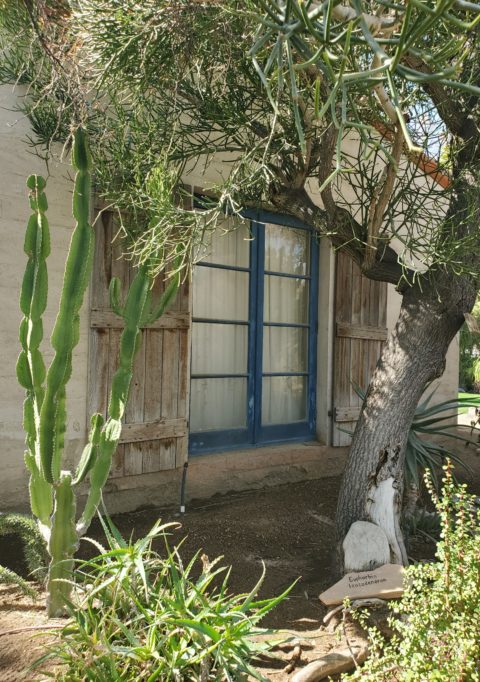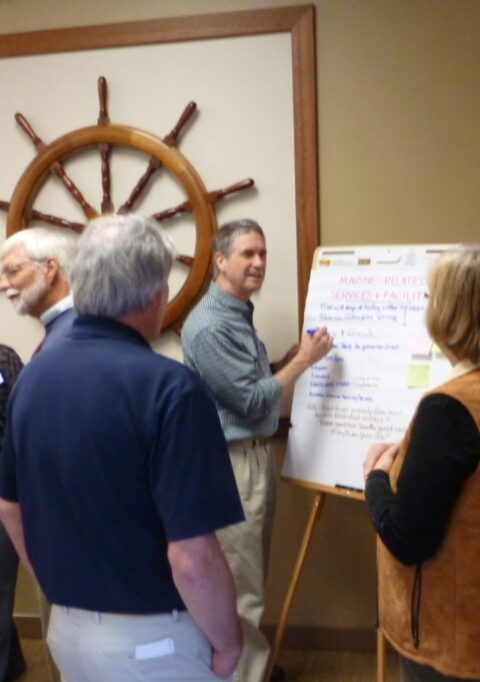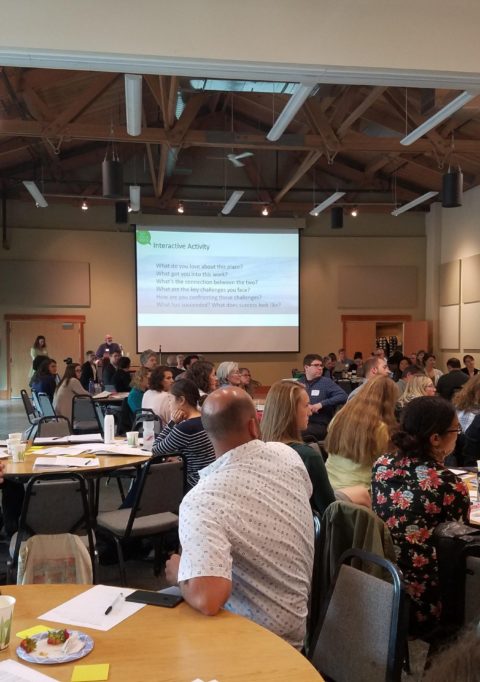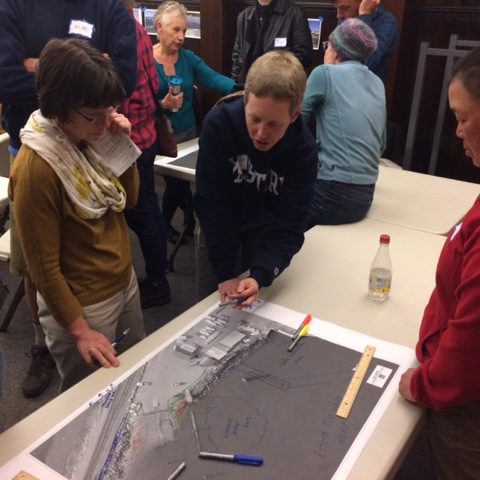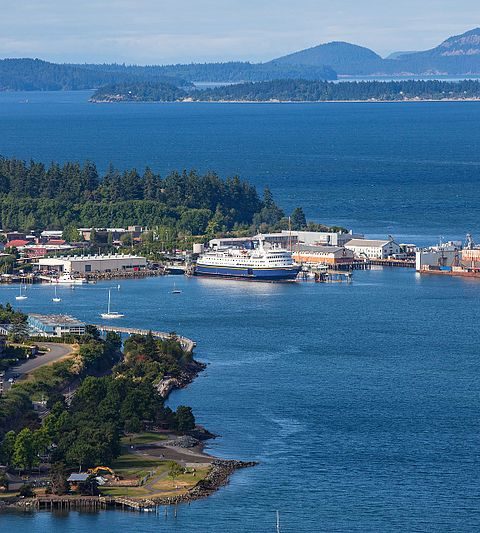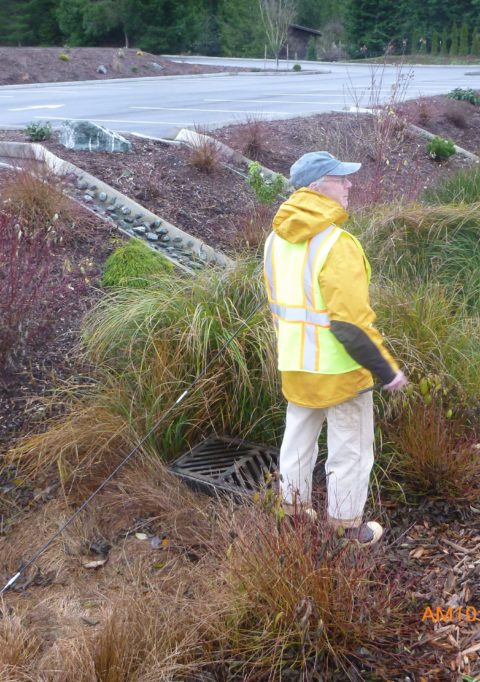Vancouver, Wash. – Maul Foster & Alongi, Inc. (MFA), a leading Pacific Northwest multidisciplinary firm, is excited to announce the acquisition of Peak Sustainability Group, a respected Bellingham, Washington-based firm specializing in climate change and sustainability services. The acquisition of Peak reflects MFA’s ongoing commitment to environmental stewardship and sustainable business practices. This partnership enables MFA…
Sustainability Spotlight: Bellingham Public Schools Tackles Educational Sustainability
Sustainable school district in action in Whatcom County
School districts have a compelling reason to reach for sustainability in their operations and curriculum. The energy their buildings and buses use, the food they serve, the water they consume, and the waste they generate puts schools at the fulcrum of what sustainability entails – reducing their environmental footprint and conserving resources. Additionally, their job is to prepare young people for a future that will test their ability to navigate environmental, social, and economic challenges. As a microcosm of society, educational institutions are in a key position to model sustainability to young people, influence change, and demonstrate they are part of the solution.

Bellingham Public Schools (BPS) won the U.S. Department of Education’s Green Ribbon Schools Award in April 2022 for their past work and future vision in sustainability. This recognition is remarkable because nearly 30 schools have received the Green Ribbon award but recognition for an entire district acknowledges BPS as a leader in educational sustainability.
Peak Sustainability Group’s Kat Klass interviewed several members of the Bellingham Public Schools (BPS) Sustainability Advisory Committee in order to share what they’ve learned from their district’s journey into sustainability and why sustainability is important in education. She spoke with Rachel Myers (RM + Co, Peak Sustainability affiliate and facilitator for the Task Force and Advisory Committee, Mark Peterson (BPS Director of Facilities and Sustainability), and Jessica Sankey (BPS Executive Director of Operations), the co-chairs of the Advisory Committee.
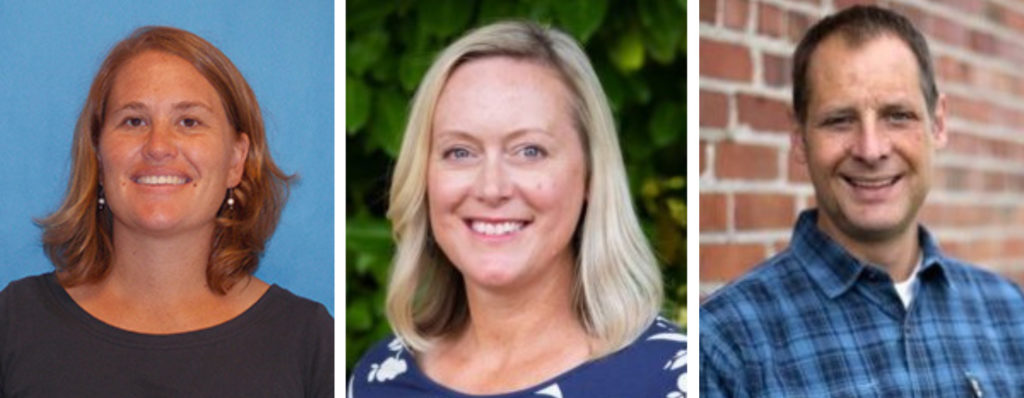
The Sustainability Advisory Committee worked with a facilitator and 30 district and community members in the spring of 2022 to develop a plan that aligns sustainability with the district’s strategic plan. “In September 2022, the Task Force shared its progress report with Superintendent Greg Baker that included a Sustainability Framework and a path forward.
“The goal of this group is to develop a climate action plan for Bellingham Public Schools as well as to define and refine actionable and measurable sustainability priorities in facilities and operations, teaching and learning, and habits and culture.”
“BPS leans into sustainability” Bellingham Public Schools website, published 11/28/2022
A HISTORY OF COMMITMENT TO SUSTAINABILITY
Why is Bellingham Public Schools committed to being a sustainable school district?
Mark Peterson (MP): Climate anxiety is real. What kind of planet are our kids going to have to live on? They’re seeing it in wildfires, record floods, and the record heat dome. BPS can lead by example and give kids and youth reassurance that the issue we’re facing is real and it’s being addressed. There are few entities as well-positioned to make a positive change to educate youth and our community. Sustainability is very interdisciplinary and rooted in science and biology. We can teach sustainability through our core classes. It’s an opportunity to model good behavior and show youth that we are committed to doing the work.
When BPS hired my position, they needed a strategic plan moving forward, which will help us determine which decisions are most effective and efficient. The Task Force was created to craft a higher-level vision with community members selected for professional excellence. We had representation from Sustainable Connections, RE Sources, the City of Bellingham, Peak Sustainability Group, and more.
Jessica Sankey (JS): The Bellingham Promise commits our whole community to care for our children. We know that includes advocating for a healthy environment today and when they are parents and grandparents. Our sustainability efforts will be integrated into the Bellingham Promise.
Addressing the climate crisis is urgent. We are reminded of this often by students and our community, especially by parents and staff.
Jessica Sankey, Bellingham Public Schools
What successes has the district already had in being more sustainable?
Mark Peterson (MP): For nearly two decades, Bellingham Public Schools has been mindful of sustainability measures that weren’t necessarily labeled as “sustainability” at that time. This includes LED lighting retrofits, saving water, reducing pesticide use, becoming a no-spray district, and putting in energy-efficient fixtures and renewable energy systems. However, there wasn’t consistent strategic planning and messaging. A lot of great work was done prior to the creation of my position. Now we are building off that work and making it more formal.
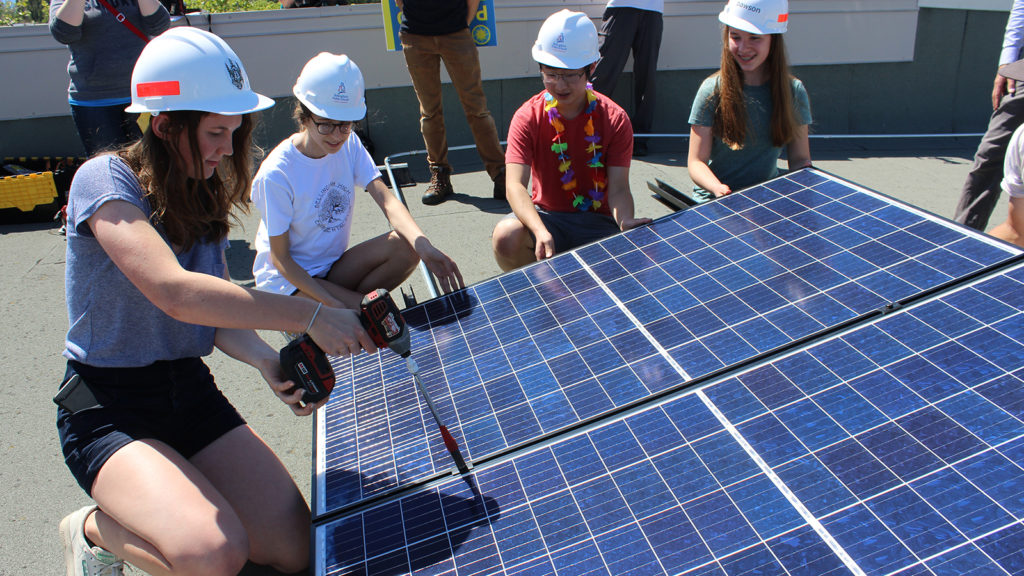
Highlights of the school district’s sustainability journey so far include:
- a commitment to energy conservation and renewable energy use;
- promoting alternative transportation (e.g., walking, biking, taking public transportation);
- participation in Puget Sound Energy’s Commercial Strategic Energy Management program;
- compliance with “solar-ready” standards for all buildings;
- use of rain barrels and other equipment to reclaim water;
- a food services system with scratch cooking and farm-to-school sourcing;
- environmental education opportunities for elementary, middle, and high school students; and
- hiring a manager to shepherd sustainability initiatives throughout district operations.
The Green Ribbon Schools recognition followed the passage of a 2022 facilities bond in February 2022. Part of the funding enables the district to continue investing in sustainability with the allocation of $20 million toward the district’s sustainability, safety, and accessibility initiatives.
THE SUSTAINABILITY TASK FORCE PROCESS
How is sustainability planning similar to strategic planning?
Rachel Myers (RM): The Task Force process was similar to strategic planning. We spent time learning during every gathering. What is the school district already doing, and what are the opportunities we can take advantage of? What do we need to know about water use and conservation, energy use and conservation, waste management, transportation, and teaching and learning?
In every case, we did a situation analysis and looked at what the school district has already done, where we could improve, and the resources and opportunities available to us.
As compared to strategic planning, one of the differences in this process was the complexity of sustainability with so many different opportunities and possibilities. The group worked hard to share the right amount of information about each topic. For some folks, some of the material was reviewed, and for others, it was brand-new information. The more meetings we had, the more the group and leaders began to understand how broad and deep the process needed to be for us to be successful.
What expectations did you have for the Task Force process? How did that work out?
JS: I’ve been excited to be a part of this for years! Our community, staff, and students have asked for a focus on sustainability. It feels great to be able to pull together this great team to plan a path forward.
MP: I tried to go into the Task Force meetings with an open mind. Having been a sustainability professional for a decade, I had opinions of what “sustainability” was, but we needed an informed community-wide vision of how the district should look. I wanted it to be the community setting those goals, not the district, myself, or some outside force dictating those goals. My only “concern” was trying to help people understand that the original iteration of the Task Force was very high-level and making sure that people were engaged.
RM: I hadn’t done any in-person facilitation in two years and neither had most of the Task Force participants because of the pandemic. On the first day, we made sure to build in time during all meetings for team members to get to know each other – to get acquainted and re-acquainted. We also focused on activities where you could get up and move as opposed to remote meetings where people must stay in front of the camera.
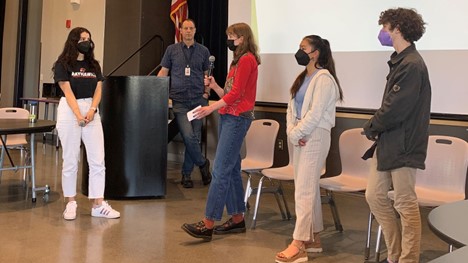
Can you talk about the value of having a third-party facilitator to help guide the Task Force process?
“At the district, we’re all super busy. Rachel’s expertise in facilitation allowed me and the BPS team to focus on what we do best. Rachel had exercises and ideas that helped move the conversation along, get quality information and feedback from many participants, and make sure that everybody was heard. She did a great job eliciting that feedback and making sure that what came out of the Task Force process was valuable. We came out with a way better outcome.”
Mark Peterson, BPS Director of Facilities and Sustainability
DEVELOPING A DISTRICT-WIDE SUSTAINABILITY WORK PLAN
The district’s Sustainability Work Plan will outline priorities going forward toward being a sustainable school district. What kinds of initiatives is the district exploring to better incorporate sustainability into operations?
JS: We are developing our work plan right now, coordinating our work in three categories: Habits and Culture; Teaching and Learning; and Facilities and Operations. Each category will have defined focus areas so we can measure progress toward goals. In Facilities and Operations, for example, the team has begun a carbon benchmarking effort to systematically record energy use intensity (EUI) so we can measure progress toward our goal of reducing energy use.
MP: A lot of the goals will be set when we get into these more in-depth meetings with the different work groups. For example, how do we do a better job managing waste overall as a district? Do we increase composting, reduce contamination, and/or develop a district standard on waste processes?
At Sunnyland Elementary, we decided to plant meadow grass that will become a pollinator garden with interpretive signage to help students identify the plants and insects there. That’s just one way we can incorporate outdoor education and experiential learning, which is especially important for students.
What should schools consider regarding transportation alternatives and efficiency?
MP: We are considering transportation alternatives. Our transportation director does the best that she can right now with our existing vehicle fleet. We have GPS systems for school bus route efficiency and are actively reducing the impact of those trips as much as possible. We fully understand that we’re using diesel buses and the impacts that come with that.
BPS is also promoting active transportation discussions around walking, biking, public transit, and carpooling. In partnership with Whatcom Transportation Authority (WTA), all riders 18 or under can ride the bus for free. Active transportation like this frees up parents from having to drive their kids everywhere. It also teaches kids independence and life skills. We’re partnering with the City of Bellingham to make sure there are bike lanes and sidewalks that can provide safe routes to schools.
School roofs seem to be a perfect place for solar. Could every school have solar?
MP: Currently, not every building can have solar due to engineering restraints. Older buildings may not have conduits or places to put inverters. Sehome High School has a 100-kW array on the roof, and it was more expensive on upfront cost. However, the building has been engineered to handle the additional load of solar panels. All new school buildings will be designed to be solar-ready moving forward. There’s also the important question of whether the community wants us to make those extra investments and have solar panels on school roofs as standard practice.
Does the district plan to connect sustainability, resilience, and/or climate education into its curriculum? If so, why is school district sustainability planning important?
JS: Absolutely. Our Teaching and Learning subcommittee is looking at how to educate our students (and provide professional development for our adults, as well) to be stewards and advocates for a healthy planet.
RM: The district has such an expansive reach in our community – students, staff, teachers, families, and more. There are 11,000 students in BPS, but each student is connected to at least one family. We have a massive impact on our community in every possible way. We want to teach our school community and connected families how they can make a difference personally. That feels exciting when you think about the breadth and impact we can have if we’re strategic and intentional about setting that path.
FUNDING AND SUPPORT FOR SUSTAINABILITY
What type of engagement is best for a district focusing on educational sustainability?
MP: We have Dr. Baker’s support for our sustainability efforts. His supervisor is our school board. They have been observing the Task Force process and are very supportive of continuing to expand and move forward on those efforts.
We’re engaging with community entities too. We have partnerships with stakeholders like the City of Bellingham and Sanitary Services Corporation (SSC). We will align with Bellingham’s Climate Action Plan but also broaden that to an action plan specific to BPS. SSC has always been a good partner to the district. Rod Pemble, their Recycling Manager, has been gracious with his time, providing waste audits and trying to right-size the level of service. They support us in improving our recycling and composting efforts while reducing contamination.
We also have outside assistance. It’s been said that the cheapest energy is the energy you don’t use. We are enrolled in the Energy Conservation Services Management Program with Puget Sound Energy (PSE), so there is an engineer assigned to our district that helps us identify additional energy conservation opportunities. It’s tied to financial incentives because that conserved power is needed for growing communities. We also work with the City of Bellingham on water conservation efforts.
How can funding provide the district with resources to attain its sustainability goals?
JS: We are grateful our voters approved our last school district bond in February 2022 which called out sustainability as a focus area. The Task Force is looking at how to address the climate crisis with responsible budgeting and an eye toward conserving resources – including funding.
REFLECTIONS
Are there any personal learning experiences from the Task Force that stand out to you? What did you learn about sustainability that you didn’t know before?
JS: I learn from the Task Force every time we meet! Task Force members bring an incredible range of expertise. What stands out the most is how knowledgeable and passionate our community at large is, and what an imperative it is for us to be agents of change.
MP: It’s hard to pin down one thing. As a lifelong learner and sustainability professional, I’ve spent a large portion of my career in project management, waste reduction, and energy efficiency as well as a lot about carbon benchmarking and the different scopes. I was also impressed with how many incredibly knowledgeable and talented sustainability professionals we have in our district who will be valuable community members moving forward with this process.
RM:
I learned so much about sustainability that I didn’t know before. When I first went into the process, I was thinking about sustainability from the perspective of What can the school district change about how they run facilities, transportation system, and other resources? What shifts can they make as leaders? The more I learned about various aspects of sustainability, the more I began to wonder What can we do as a community?
There are smaller, more personal decisions that are part of the bigger picture, which became more illuminated for me. It’s so important to create and strengthen a culture that values those decisions.
There are choices that kids, students, teachers, and staff can make, not just leadership. For example, BPS has composting available in every lunchroom in the district right now. But a lot of kids and maybe even staff don’t know how to use the compost correctly. We’ve made the investment, but then we’re not capitalizing on it in terms of training and culture.
The other thing that stood out to me and the whole group was the importance of integration across the school district. When we become more sustainable as a building or district, how are we reinforcing and underscoring those changes through curriculum, classroom setup, and learning opportunities for students? There are some schools with solar panels. Are we tying that into the curriculum for students, so they understand the importance of solar energy, how it works, and how it’s being used?
If another school district wanted to go through this process, what would you want them to know?
JS: I think the most valuable lesson from this Task Force is that the expertise and drive is in our community. It is a moral responsibility to host big conversations that lead to healthier environments for our children and their children’s children. I keep thinking about “being a good ancestor.” This is important work. We are safeguarding the well-being of the generations to come.
MP: We received a lot of interest from folks who wanted to serve on the Task Force, and we had to choose between very qualified applicants. We wanted a balanced group of people with diverse areas of expertise who would collaborate well together. Moving forward, we want to make sure that individuals who weren’t selected for the original Task Force still have a chance to be heard, acknowledged, and contribute to this process moving forward.
The climate crisis is a massive problem, and once we started talking about it with people, we realized that six meetings were not enough time to have the in-depth discussions we needed. Also, there’s only so much you can ask people to volunteer. I’m pleased that we were successful given the short timeline in developing recommendations to incorporate into a strategic plan and inform our workgroups.
RM: We realized early on that it would’ve been helpful to engage more student voices – perhaps one from every high school. Two students came to every meeting, one from Options and one from BHS.
We intentionally moved our meetings every time to different schools so Task Force members could see the buildings themselves. Some schools were built with sustainability in mind, but the older ones were not. This priority to see the actual schools in the district created some transportation challenges for members and that impacted attendance.
Ideally, this would be a year-long process. We had six meetings over the last 3 months of the school year which is a tough time for teachers. So, attendance sometimes dropped a bit too.
In 2023, the Task Force will have monthly meetings for three workgroups: Facilities and Operations, Teaching and Learning, and Habits and Culture. It will be a permanent Advisory Committee meeting five times over this school year. As an overarching group, it will connect the dots for the workgroups which will focus on actions and tactics to move forward in their respective different areas.
If another school was going to approach this process, it might make sense to start with a smaller team of district and community leaders and have them articulate goals, vision, and aspirations. This wouldn’t have required such a deep bench. But our larger group did tap into a lot of great feedback!
What role do you think a school district should play in building a resilient future?
JS: I’m all in for finding effective ways to shift our practices, big and small, to build a more equitable, healthy, and well-resourced world for my kids and their peers.
RM: Inviting students and families to be part of this process is great. It shows us as parents our role and how we can create a more sustainable system for our school.
MP: As a parent of two seniors at Sehome, I think the school district has a huge role to play because the climate crisis is real and imminent. The district has an opportunity to show that there are places and entities doing their best to move forward and address the climate crisis based on science.
Like I said earlier: What kind of planet are our kids going to have to live on? It’s an opportunity to model good behavior and show youth that we are committed to doing the hard work.

